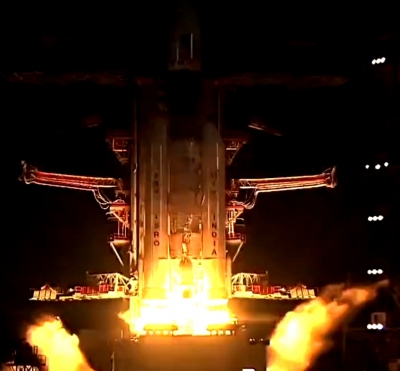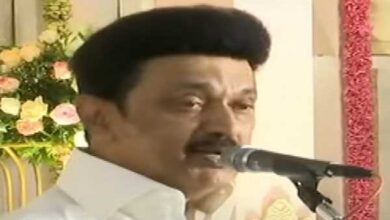Now exploring the Sun : Chandrayaan-3, Sun Mission & more: Busy 2023 awaits ISRO to Wow the World

Chennai, Dec 24 : The year ahead will be significant for the Indian Space Research Organisation (ISRO) in particular and for the space sector, says S. Somanath, chairman of the country’s premier space agency, and Secretary, Space, Government of India.
The Indian space agency is looking at couple of major space missions, like the Mission to the Moon (Chandrayaan-3); test flights and unmanned flight of rocket for human space mission Gaganyaan; launch of Aditya L1 satellite or the Sun Mission; the Indo-US joint NISAR satellite launch; launch of 36 OneWeb satellites for a fee; flying for the second time its small rocket; development of new rocket architecture and others.
The Central government is expected to announce the Space Policy and also enact a law governing the sector next year and the private players will also get ready their satellites and rockets.
“The ISRO will be looking at ways to have better systems. The space agency will focus on development of new generation rockets that are cost effective. The agency will work on developing a new rocket architecture,” Somanath told IANS in an interview.
In line with the global trend, the ISRO will also look at having a constellation of satellites for imaging purposes.
According to Somanath, the Space Policy has to come and then the Space Bill. The draft Bill is under discussions with several Ministries.
Speaking of the space missions he told IANS that the launch of 36 satellites belonging to the UK based OneWeb is there. The satellites will be launched by ISRO rocket LVM3 (formerly Geosynchronous Satellite Launch Vehicle-Mk3).
The prestigious Chandrayaan-3 mission is also slated for 2023 and the launch in June/July is critical. ISRO plans to send one navigation satellite, NavIC, next year and try one more, Somanath said.
He said the ISRO is also planning to have its mission to the sun with its satellite Aditya-L1, a coronagraphy spacecraft to study the solar atmosphere, with a PSLV rocket next year.
According to the ISRO, the spacecraft will be placed in a halo orbit around the first Lagrange point, L1, of the Sun-Earth system.
A satellite around the L1 point has the major advantage of continuously viewing the Sun without occultation/eclipses.
As regards to Gaganyaan, ISRO plans to test fly two rockets and also carry out an unmanned rocket mission next year.
On the Indo-US collaborative NASA-ISRO Synthetic Aperture Radar (NISAR) Mission, Somanath said the satellite will be launched next
year.
“The NISAR satellite is expected to be flagged off from the US to India in January/February next year,” Somanath remarked.
According to him, the ISRO is planning to fly a couple of its Small Satellite Launch Vehicle (SSLV) — its new rocket — next year.
The space agency has to make a satellite to fly the second SSLV rocket. The first mission that happened in 2022 was a failure.
Somanath said there are good enquiries for the usage of SSLV and looking at ramping up the production.
In 2023, the ISRO is expected to test its semi-cryogenic engine that would power the rockets.
“We are working to get the Indian government’s permission to launch one NavIC satellite next February. We are also looking at the long term plan. We are building five more NavIC satellites as replacement for the existing ones. The five satellites will have a new frequency for civilian use. Further the communication security is beefed up for use by the strategic sectors,” Somanath said.
The year 2023 will also see ISRO test landing its reusable launch vehicle (RLV) as the air force helicopter was not available in 2022 to lift and release the same from the required height.






